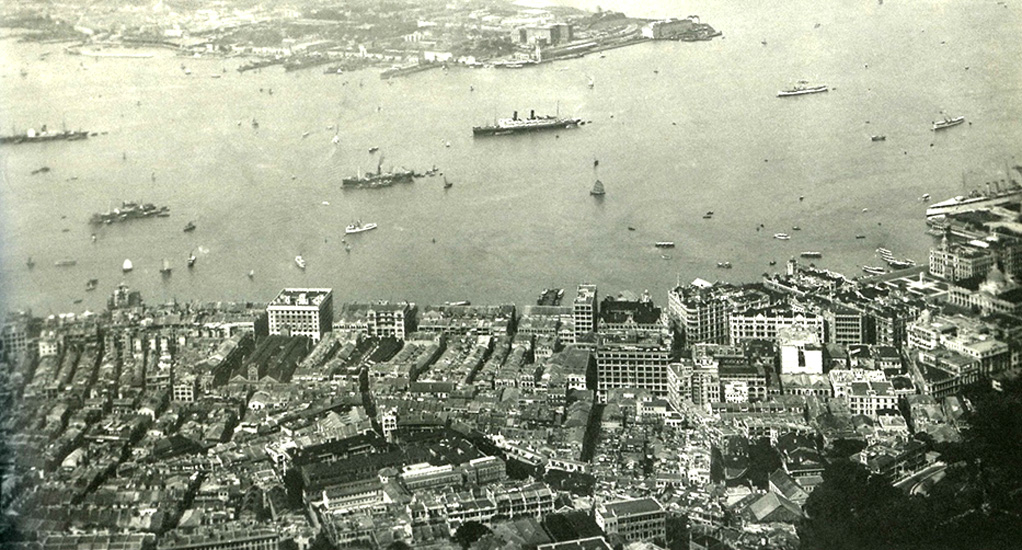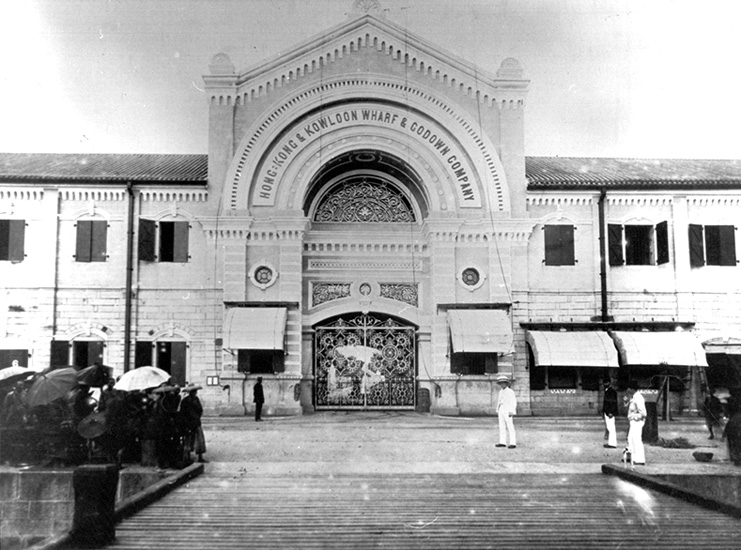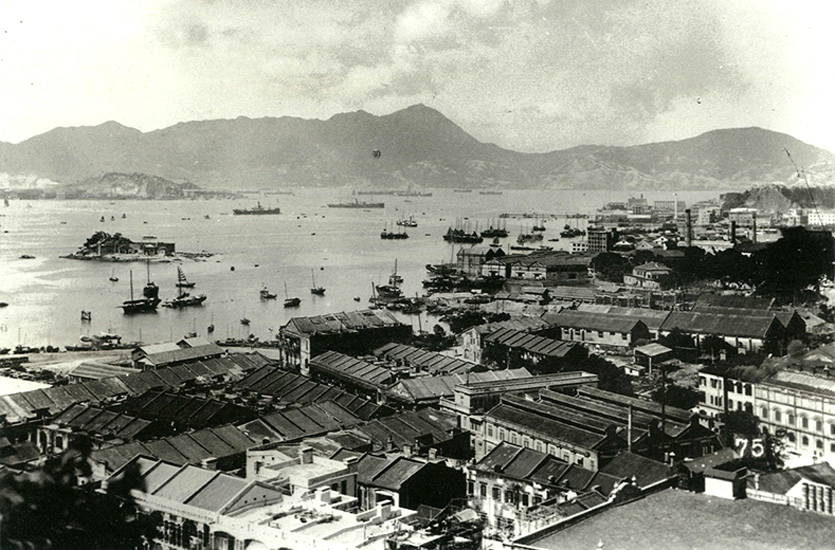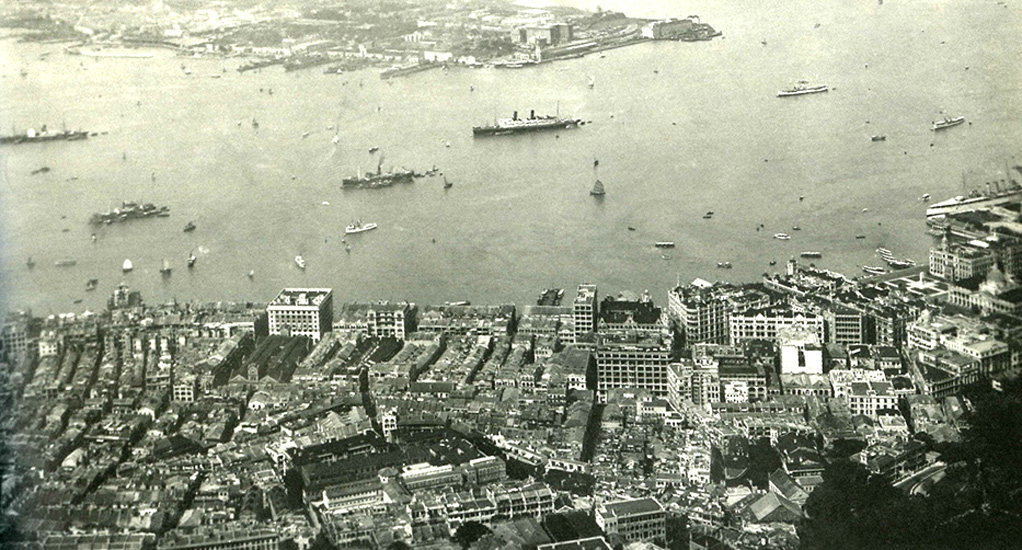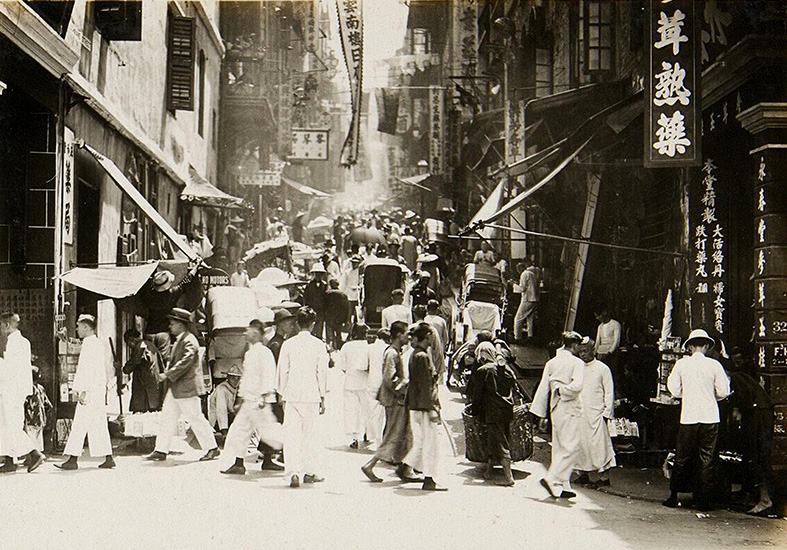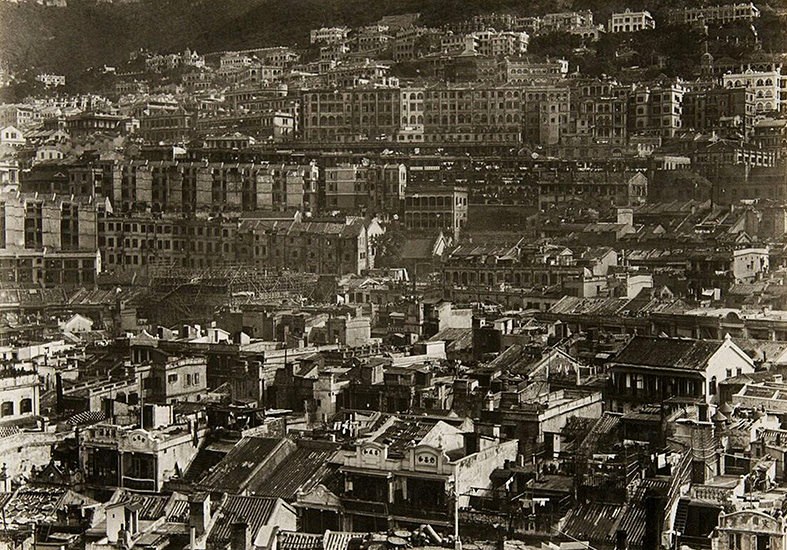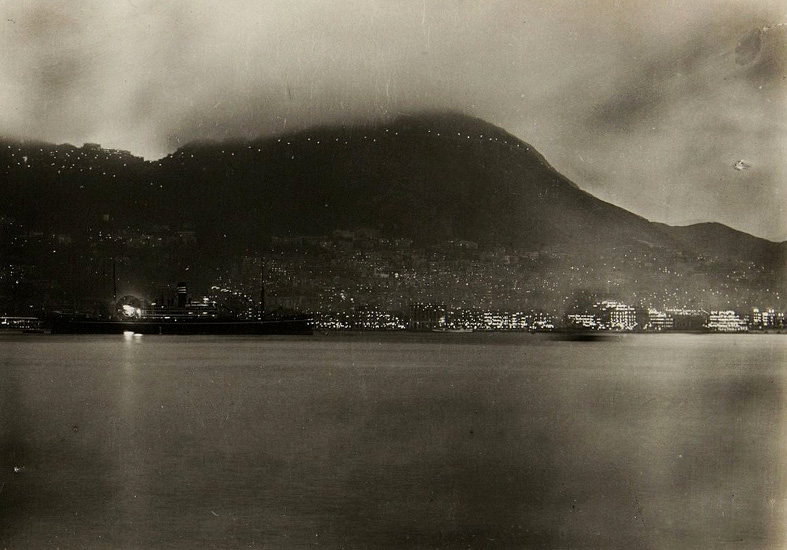Stepping into the 20th century, Hong Kong’s infrastructure, including roads, wharves, and warehouses, became more established after about 60 years of development. Trade-related industries such as finance, insurance, transport, communications, warehousing, and ship repairing developed rapidly. By the eve of the Second World War, there were over 30 Chinese and foreign banks operating in Hong Kong. In the early years of the Republic of China, the Chinese mainland was fraught with warfare among warlord cliques. Many mainlanders who fled to Hong Kong to avoid war brought capital and technology with them. Meanwhile, some overseas Chinese came to Hong Kong for business. All these favoured the growth of entrepot trade in pre-war Hong Kong.
Although being struck by the First World War, the overall trade volume of Hong Kong witnessed an increment between 1900 and 1924. The total tonnage of vessels sailing in and out of Hong Kong reached 19,325,384 tons in 1901 and rose to 56,731,077 tons in 1924. The entrepot trade in Hong Kong fluctuated due to the Canton-Hong Kong strike and the world economic crises between 1925 and 1936. In 1937, Japan launched a full-scale war of aggression against China. The centre of China’s foreign trade thus gradually shifted to South China where Hong Kong is located. As the war went on, important foreign trade ports such as Shanghai (上海), Nanjing (南京), and Wuhan (武漢) collapsed one by one. Hong Kong became the only gateway for China’s foreign trade. Pre-war Hong Kong enjoyed a period of prosperity when trade volume surged between 1937 and 1940.
Hong Kong’s major trading partners began to change in the 1900s. Although Hong Kong’s largest trading partner was still the Chinese mainland for this period, its share of the city’s total trade value started to decrease. Another significant change was that Hong Kong’s foreign trade became increasingly diversified and internationalised in light of Britain’s decline on the world stage and the emergence of new markets such as Japan, the United States, and Southeast Asia.
|
|
Why did entrepot trade flourish in pre-war Hong Kong? |
|
|
See answer below. |
The Kowloon-Canton Railway (KCR) Chinese Section opened and through train service to Canton commenced in 1911. It was a fast and convenient route to reach the vast South China region, promoting both land transport and trade development in Hong Kong. The photo shows the first KCR train.
The main building of The Wharf (Holdings) Limited (around 1910) in Tsim Sha Tsui. Entrepot trade developed rapidly in pre-war Hong Kong. Some consortia operated businesses such as trading and warehousing on both sides of Victoria Harbour.
The area from Tin Lok Lane (bottom left corner) to Jardine Matheson Single Storey Godown area in Causeway Bay in 1920. At that time, British consortia such as Jardine Matheson and The Wharf (Holdings) Limited had a lot of trade investment on both sides of Victoria Harbour.
The banking industry and trade development are interrelated. The photo shows the HSBC Main Building in 1924.
A view of Central from Victoria Harbour in the 1920s. Since Hong Kong was established as a free port, Central became the core area of foreign trade after decades of development.
A view of Victoria Harbour from the Mid-Levels in 1930. The thriving trade manifested itself in the busy harbour traffic.
The city became prosperous from trade. The photo shows a street scene with shops on both sides in Hong Kong in 1938.
A distant view of a residential area in Hong Kong in 1938. Trade and economic growth led to population growth. Buildings were closely packed.
The night view of Hong Kong’s Victoria Harbour in 1938. Trade and economic development made Hong Kong a city that never sleeps. Its night scene is well-known at home and abroad.
In 1933, Ba Jin (巴金) described the beauty of Hong Kong’s night scene in the article Hong Kong Night. Below are extracts of two paragraphs:
The sea is dark, so is the sky. There are some stars in the sky, but most of them are dim. Starlight gathers around Hong Kong on the opposite side.
There are lights on mountains, in the streets and in buildings. Each one is like a star. In my eyes, they are brighter than stars. They pack together and form a mountain of stars, radiating a thousand feet of light.
The S.S. President Polk docking at Tsim Sha Tsui (around 1940). With Britain’s decline on the world stage and the emergence of new markets, trades with countries such as Japan, the United States, and those in Southeast Asia gradually increased. The foreign trade in Hong Kong became more diversified and internationalised.
|
|
Why did entrepot trade flourish in pre-war Hong Kong? |
|
|
The major reasons are as followed: 1. Well-established infrastructure: Since Hong Kong became a free port, the city gradually built up its infrastructure, including roads, wharves, and warehouses. Trade-related industries, including finance, insurance, transport, communications, warehousing, and ship repairing grew rapidly. 2. Political chaos in the Chinese mainland: The early Republican years was fraught with constant warfare among warlords. Many mainlanders who fled to Hong Kong to avoid war brought capital and technology with them. 3. Investment of overseas Chinese: Some Chinese who went abroad in early years invested in Hong Kong. 4. War of Resistance: Japan launched a full-scale war of aggression against China in 1937. The centre of China’s foreign trade gradually shifted to South China where Hong Kong is located. As the war went on, important foreign trade ports such as Shanghai, Nanjing, and Wuhan collapsed one by one. Hong Kong became the only gateway for China’s foreign trade. This led to a surge in trade volume. 5. Changes in trade situation: Although the Chinese mainland was still Hong Kong’s largest trading partner in the early 20th century, its share of Hong Kong’s total trade value started to decrease. The foreign trade in Hong Kong became more diversified and internationalised considering Britain’s decline on the world stage and the emergence of new markets such as Japan, the United States, and Southeast Asia. |




